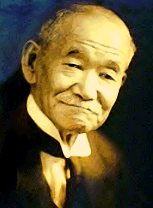

"Judo is a way to effectively use both your physical and spiritual strength. By training you in attacks and defenses, it refines your body and your soul, and helps you make the spiritual essence of judo a part of your very being. In this way you are able to strive towards self perfection (Maslow's Self Actulalization) and contribute something of value back to society."
Jigoro Kano, Founder of Kodokan Judo
The Complete Syllabus of Kodokan Judo
The New Didactics of Judo by Pedro Kolychkine
History:
Nihonden Kodokan Judo was founded by Jigoro Kano in May of 1882 from various systems of jiu-jitsu as a marital way, sport, and form of exercise with practical self-defense applications that builds self-confidence. It has been in the Olympics since 1964 when it was introduced in Tokyo. Judo is actually comprised of two words, Ju, meaning gentle and Do, meaning way. This relates to the ability to yield and redirect an attacker's own energy. Judo techniques involve using the arms, hip, or legs to throw an opponent to the ground, along with holds, strangles, and joint locks that are applied to achieve a submission. Striking techniques are only used in self-defense. Students must first learn how to do proper ukemi, falling using a variety of movements on a tatami, adequately matted area.
Sensei Gary's unique way of teaching judo's forward method of failing. Watch his falling stint on Conan with Jack Black.
Practices:
Workouts and general skill development are divided into two distinct categories, tachi waza (standing techniques) and ne waza (ground techniques). Class begins with a vigorous warm up, yoga style stretching, and falling exercises. This is followed by ground fighting drills and throwing technique practice with a partner. The last half hour of class is set aside for randori (free practice) in which students are paired off to fight each other for timed rounds with short breaks in between.
New students are always welcome and are encouraged to advance at a pace comfortable to them. Although you don't need to be in shape to begin judo, you will in a very short period of time be in the best physical condition of your life. While the exercises are quite strenuous, emphasis is placed on technique, endurance, and flexibility, rather than strength. Potential students are encouraged to watch a class first, bearing in mind once enrolled regular attendance is expected. Judo is ideal for developing confidence in children to help prevent bullying.
Safety First - CDC Concussion Information Sheet
.
American President Roosevelt & Russian President Putin (Update)
Science:
As your career in judo unfolds, you will begin to recognize the scientific aspects of judo and how it all relates to movement in whatever physical activity you're involved. Top athletes in any competitive physical sport all realize, that to maximize their potential they must use the whole of their body and mind in unison correctly. This generally relates to power from the hips and legs being the basic tools of efficient motion, with your mind releasing the energy necessary to explode into victory. Power and technique don't come from big tensed muscles, but rather relaxed, flexible bodies and calm minds. This is not to say muscle has no place, but rather if muscle competes against technique, technique generally prevails.
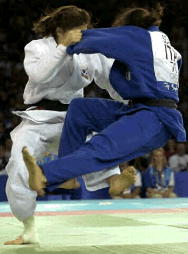
Judo in the Olympics
Simple Version of IJF Judo Rules
The Latest IJF Rule Changes for 2025/6
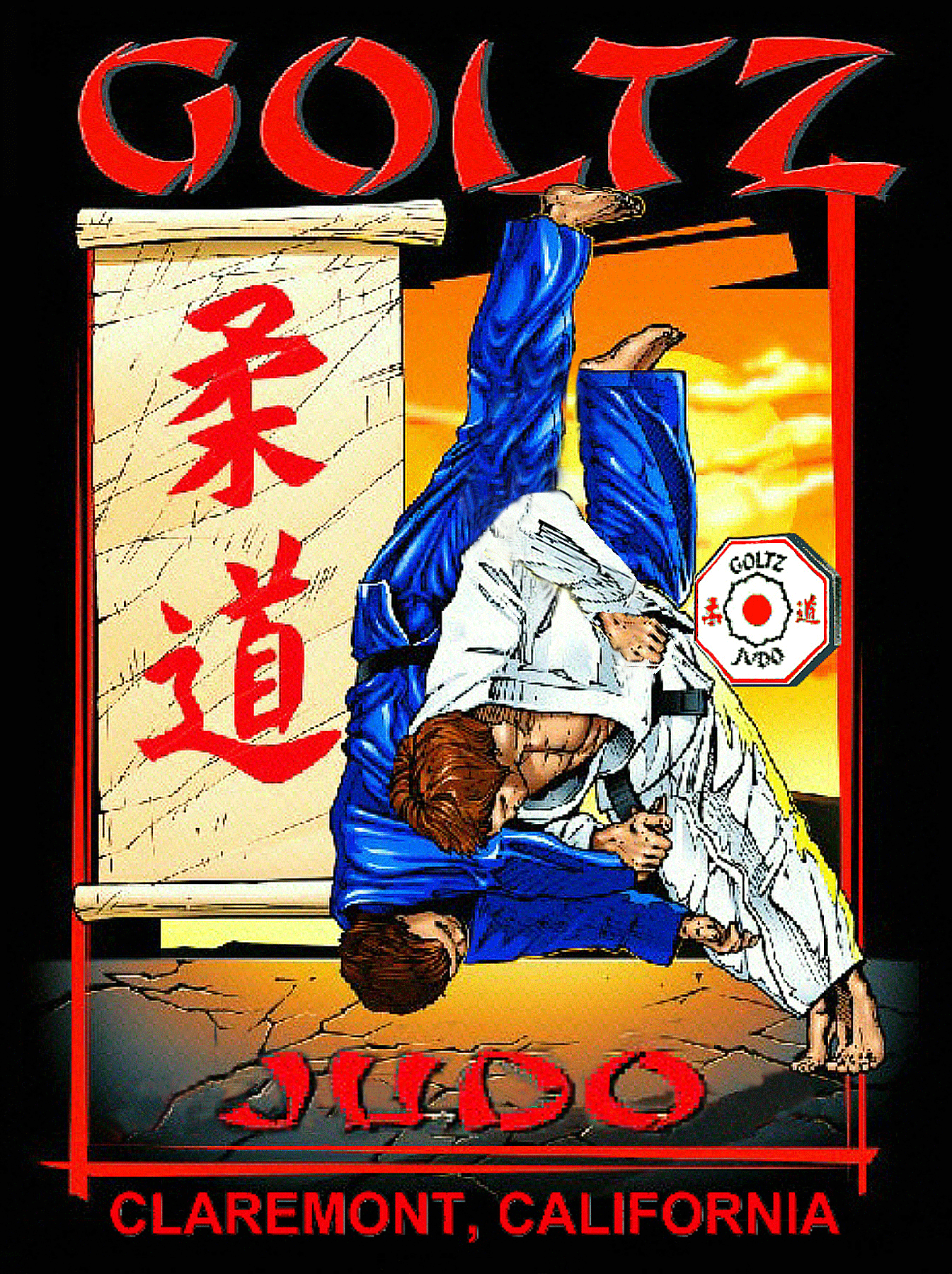
Throw above shows main change in the judo rules
IJF Olympic Judo Penalties - Video
IJF Olympic Judo Prohibited Acts - PDF
IJF Olympic Judogi Control with Video
Summary Links on IJF Olympic Judo Rules
Kodokan Contest Judo Rules - 1955
The below link is the innovative approach towards the future of judo
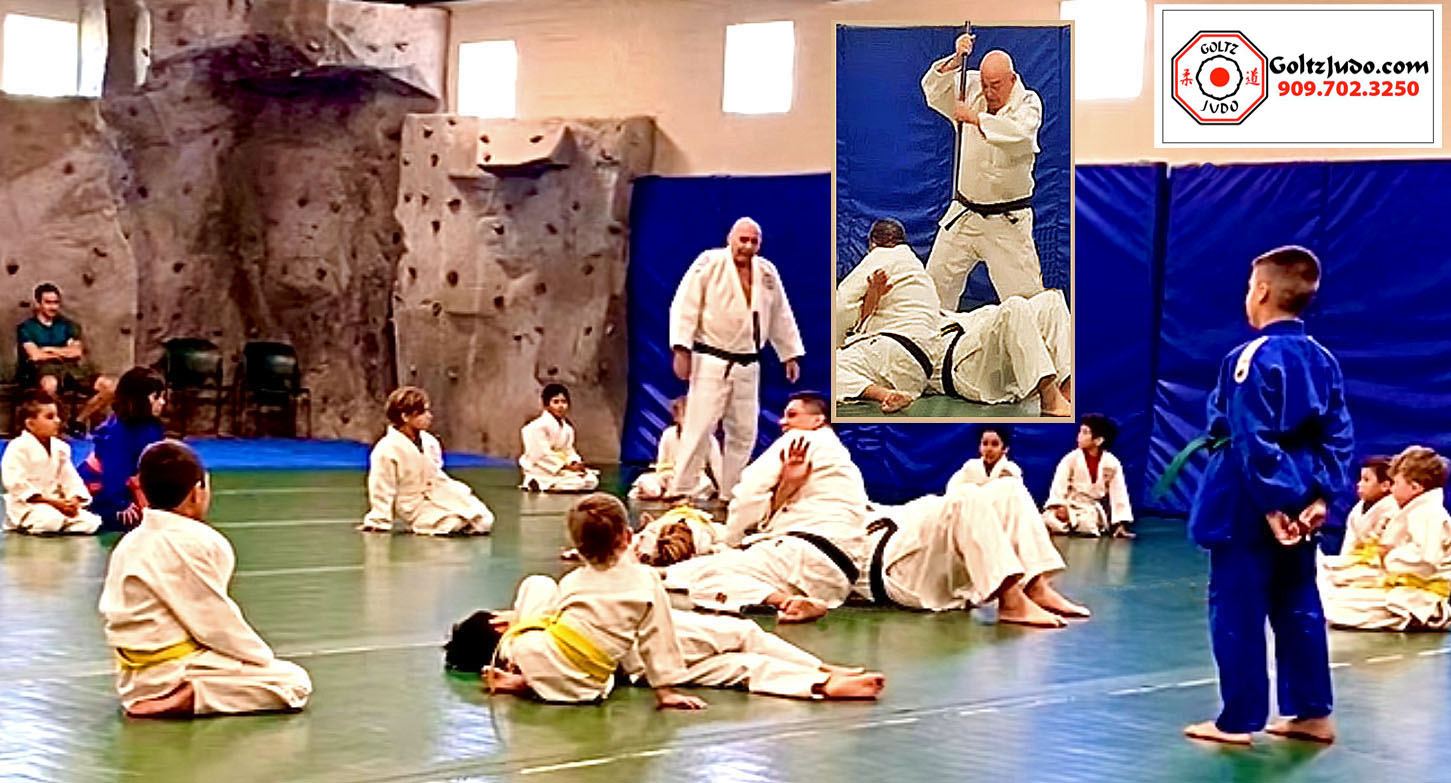
Sensei Gary on Why a Pin is a Submission
Tournaments:
It is recommended that students regularly enter shiais (tournaments) listed on the Club Calendar. A shiai is the best and safest way to train for a real self defense situation. While these events are fun way to test your skills, they can also be a bit stressful. More importantly they help to build self confidence while developing one's character in terms of overcoming fear and anxiety. Modern judo rules have become a bit complex and should be studied before entering any event.
Watch Sensei Gary Perform a Judo Self-Defense Kata - Version II
Self-Defense:
What makes judo the ideal form of self-defense is that it works off of a natural human reaction to grab hold of someone when attacking or defending. Even highly skilled boxers, when they start getting into trouble go into a clinch and have to be physically separated by a referee. Judo students learn exactly where to grab in order to obtain the best leverage to control and defeat an attacker. Grappling skills are extremely effective for women and children because when they are attacked it is often by someone trying to pull them into a car or other small space.
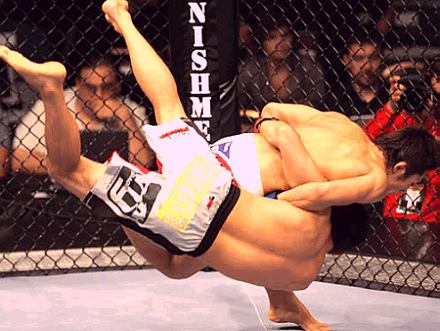
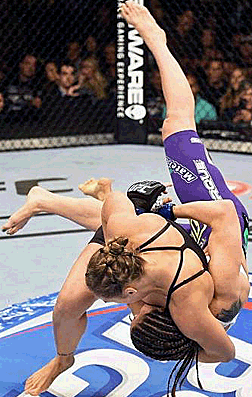
Judo champions Dong Hyun Kim, Ronda Rousey, & Kayla Harrison in the UFC
Los Angeles Police Department statistics indicate 80% of street fights usually end up on the ground where punching and kicking are of little use. It has been consistently proven in the Ultimate Fighting Championships that the grappler usually prevails. Although our primary emphasis is on grappling skills, we do also incorporate basic punches, kicks, knees and elbows blows as part of our regular training. For these reasons judo is ideal for use by law enforcement, security, or airline personnel.
Photo of Kano & Calligraphy of his judo maxims
Spirituality:
There are spiritual aspects in judo as the endless hours of diligent practice temper the soul and build humility. The dojo (training hall) is considered sacred. Prior to engaging a partner, it is polite to bow to each other. The teacher is always referred to as a sensei (one who came before). Judoka (judo practioners should focus on mushin being in the here and now. At the root of judo are two principles as stated by Dr. Kano; seiryoku zenyo (to make the best use of your power) and jita kyoei (to go forward together with your opponent). The values found in judo will accompany practitioners beyond the dojo to wherever they go in life. They will also enjoy the benefit of developing friendships with fellow judoka on a worldwide basis - (Kyuzo Mifune's writings on judo).
Neil deGrasse, American Astrophysicist on the Meaning of Life (Sounds Kanoesque)
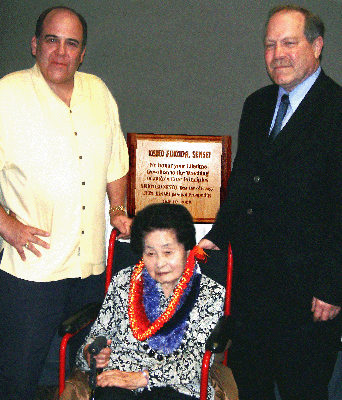
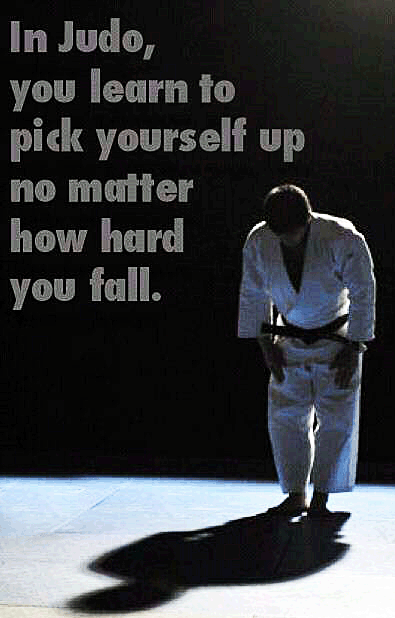
10 Reasons Why Your Child Should Take Up Judo
What Parents and Students Had to Say About Goltz Judo